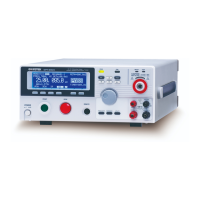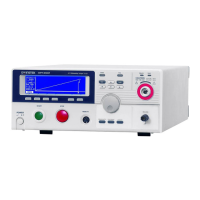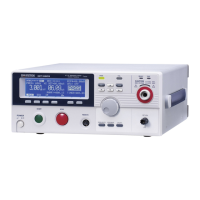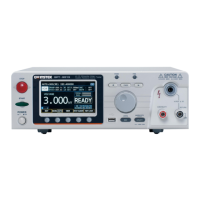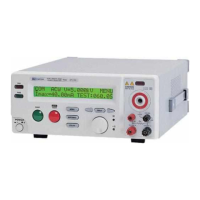Returns the data associated with a sweep graph.
Data can be returned in one of two ways; either all
the data can be returned or only the data at a
particular point in time.
The test points are evenly distributed. There can be
up to 190 data points.
If only the data from a single point is returned then
the data is returned in the following format*:
DATA POINT, VSET, ISET, TIME, CR+LF
If the all the data for the all the points is returned
then the data is returned in the following format*:
ACW MODE,CR+LF
No.,V(kV),I(mA), T(S) ,CR+LF
001,0.071,0.032,0000.1,CR+LF
002,0.111,0.047,0000.2,CR+LF
…………………………………
013,0.601,0.215,0001.3,CR+LF
END
*Where CR+LF is a carriage return and line feed
code. Time is in seconds.
SWEEP10:DATA:SHOW?
> 010,0.106,00.00,0001.0, CR+LF
Returns the data at point 10, which is at the 1 second
time for the sweep test.
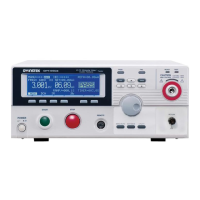
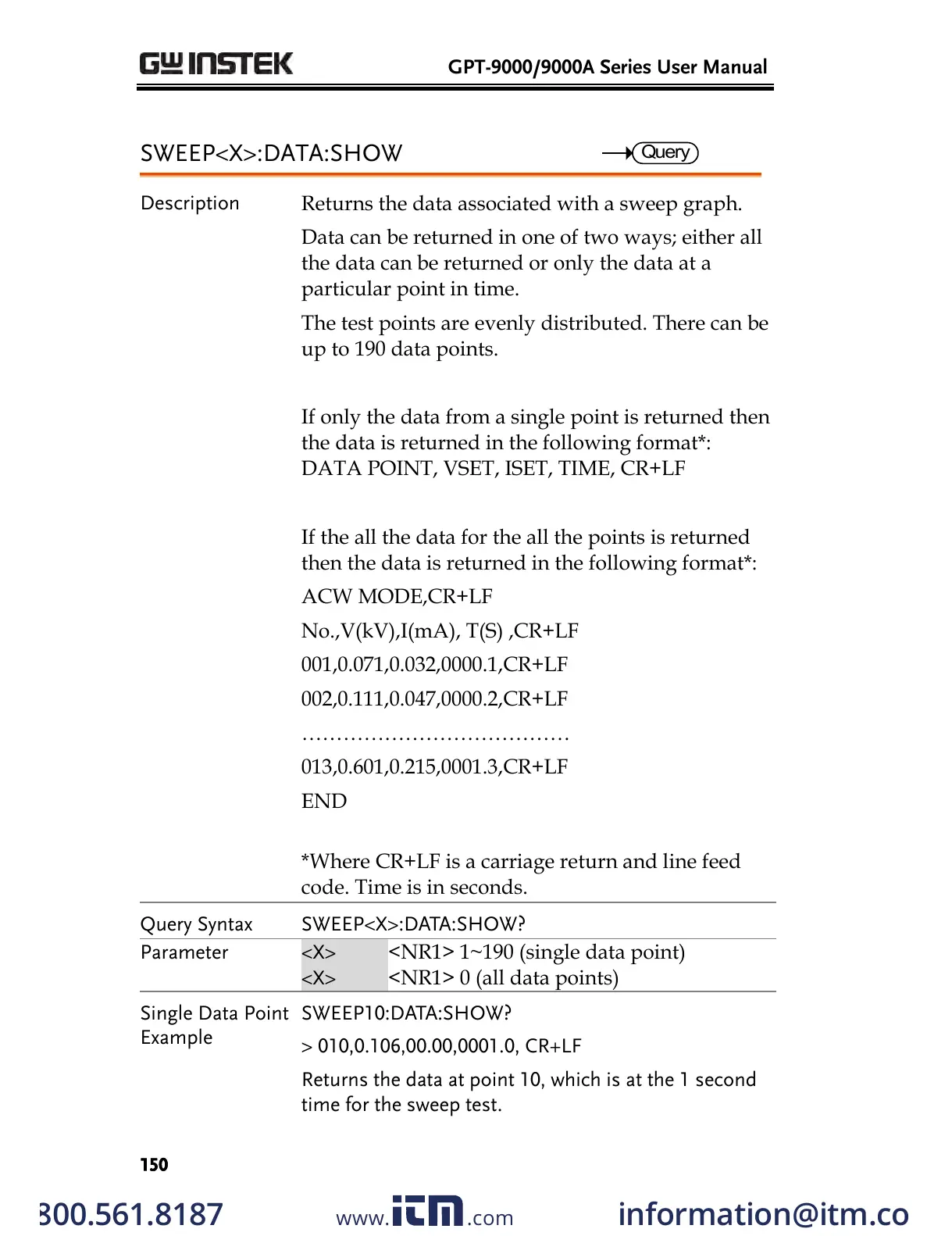